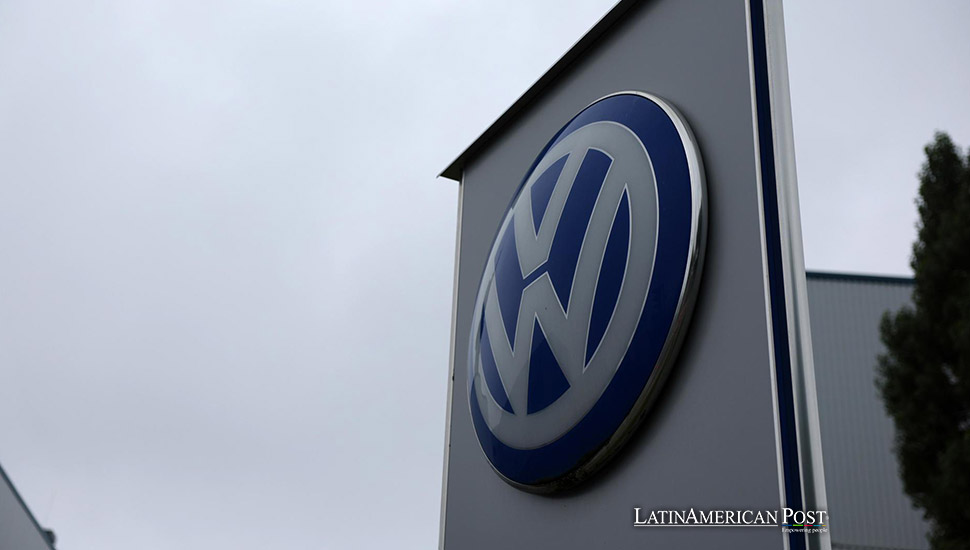Volkswagen’s Latin American Strategy: A Critical Focus for Survival

As Volkswagen navigates a critical period of restructuring and potential plant closures, the Latin American market emerges as a vital area for growth and stability. With decreasing sales in China and Europe, the company must look toward Latin America’s production and demand to revive its fortunes.
Volkswagen, one of the world’s leading automobile manufacturers, is at a pivotal moment in its history. Faced with shrinking sales in key markets like China and Europe, the company is reassessing its global strategy. For years, Volkswagen has relied heavily on its operations in China, but with sales dropping by nearly 20% in the second quarter of 2024, the company is forced to look for growth elsewhere. With its growing middle class and demand for affordable vehicles and new electric models, Latin America presents an opportunity for Volkswagen to expand its market share and stabilize its operations.
Volkswagen’s dependence on China has exposed the company to significant risks, particularly as geopolitical tensions, economic slowdowns, and structural changes impact consumer demand in the region. The automotive giant is now exploring alternative markets, and Latin America is positioned to play a crucial role in its survival.
Latin America’s Role in Volkswagen’s Production Strategy
Latin America has long been essential for Volkswagen’s production and sales. The company operates significant manufacturing facilities in Brazil and Mexico, producing various vehicles catering to local markets and exports to the United States and other regions. In recent years, Latin America has proven resilient in the face of global economic downturns, and the region’s demand for affordable, reliable vehicles remains strong.
As Volkswagen faces potential plant closures in Germany and workforce reductions across Europe, the company will likely increase its reliance on production facilities in Latin America. By focusing on cost-effective production in the region, Volkswagen can maintain its competitive edge while addressing the growing demand for electric vehicles (EVs) in Latin American markets.
Volkswagen’s assembly plants in Brazil and Mexico are well-equipped to handle increased production, particularly as the company shifts toward EVs. These factories have the infrastructure to produce traditional internal combustion engine (ICE) vehicles and the newer electric models essential to Volkswagen’s future growth. Additionally, Latin America’s proximity to the United States, a significant export market, provides logistical advantages for the company.
Rising Demand for Electric Vehicles in Latin America
While Latin America has historically lagged behind Europe and North America regarding EV adoption, the tide is beginning to turn. Governments across the region are introducing policies to encourage the production and purchase of electric vehicles, spurred by growing concerns about climate change and air pollution. Countries like Brazil, Mexico, and Argentina have implemented tax incentives, subsidies, and infrastructure development plans to promote the use of EVs.
Volkswagen is well-positioned to capitalize on this shift. The company has already started rolling out electric models in the region, with the ID.4 and ID. Buzz electric vehicles have been introduced to Latin American consumers in recent years. As demand for clean energy solutions grows, Volkswagen can leverage its expertise in EV technology to dominate the emerging market.
However, challenges remain. One of the biggest hurdles to widespread EV adoption in Latin America is the lack of charging infrastructure. To address this, Volkswagen has partnered with local governments and private companies to invest in developing charging networks. These efforts are crucial to ensuring the success of Volkswagen’s electric models in the region and establishing the company as a leader in sustainable transportation.
The Impact of Economic and Geopolitical Challenges
Despite the opportunities the Latin American market presents, Volkswagen’s path forward is not without obstacles. The global automotive industry has been severely impacted by economic challenges from the COVID-19 pandemic, the war in Ukraine, and rising inflation. These factors have led to supply chain disruptions, higher production costs, and weakened consumer demand in many regions.
In Germany, Volkswagen faces an internal crisis as sales continue to fall, and the company is considering drastic measures to stay afloat. Audi, one of Volkswagen’s premium brands, saw an 11.3% decline in sales in the second quarter of 2024, while Volkswagen experienced a 5.2% drop. To mitigate the effects of these setbacks, Volkswagen is contemplating plant closures and workforce reductions in Germany—a move that has sparked outrage among unions and workers’ representatives.
Jan Mentrup, a representative of IG-Metall, Germany’s largest industrial union, voiced his opposition to the company’s restructuring plans, stating, “Volkswagen has gone through numerous crises in the past. In those times, the principle was that challenges had to be overcome with the workers, not against or at their expense.”
These internal conflicts, combined with the pressures of external economic factors, have made it clear that Volkswagen must expand its international operations to survive. With its relatively stable economies and growing demand for vehicles, Latin America provides a promising alternative to the company’s reliance on European and Chinese markets.
Volkswagen’s Future in Latin America
Looking ahead, Latin America presents a unique opportunity for Volkswagen to expand its market share and secure its future. The region’s economic growth and increasing demand for affordable vehicles and electric models align with Volkswagen’s strategic goals. Latin America will likely play a central role in its recovery as the company continues to innovate and adapt to the global shift toward electric cars.
One of Volkswagen’s key advantages in the region is its strong brand recognition and established presence. For decades, the company has been a household name in Latin America, known for producing reliable and affordable cars that appeal to the region’s middle class. As Volkswagen moves forward with its plans to electrify its fleet, it can build on this legacy and introduce a new generation of consumers to its electric models.
Moreover, Latin America’s growing middle class and increasing urbanization create a favorable environment for expanding electric vehicle sales. As cities across the region continue to grow, the need for clean, efficient transportation solutions becomes more urgent. Volkswagen’s electric models are well-suited to meet this demand, providing consumers with affordable, eco-friendly alternatives to traditional vehicles.
In addition to expanding its sales efforts, Volkswagen will likely increase its production capacity in Latin America. The company’s manufacturing facilities in Brazil and Mexico have proven cost-effective and efficient, making them ideal locations for producing ICE vehicles and electric models. By investing in these facilities and ramping production, Volkswagen can reduce its dependence on European factories and mitigate the risks associated with potential plant closures in Germany.
Also read: Improving Job Quality in Latin America: A Long Road Ahead
Volkswagen’s future hinges on its ability to adapt to a rapidly changing global market. As the company faces declining sales in China and Europe, it must look to Latin America for growth and stability. The region’s growing demand for vehicles and favorable economic conditions make it an attractive market for Volkswagen’s electric models and production efforts. By focusing on Latin America, Volkswagen can navigate the challenges ahead and emerge as a leader in the global automotive industry.





